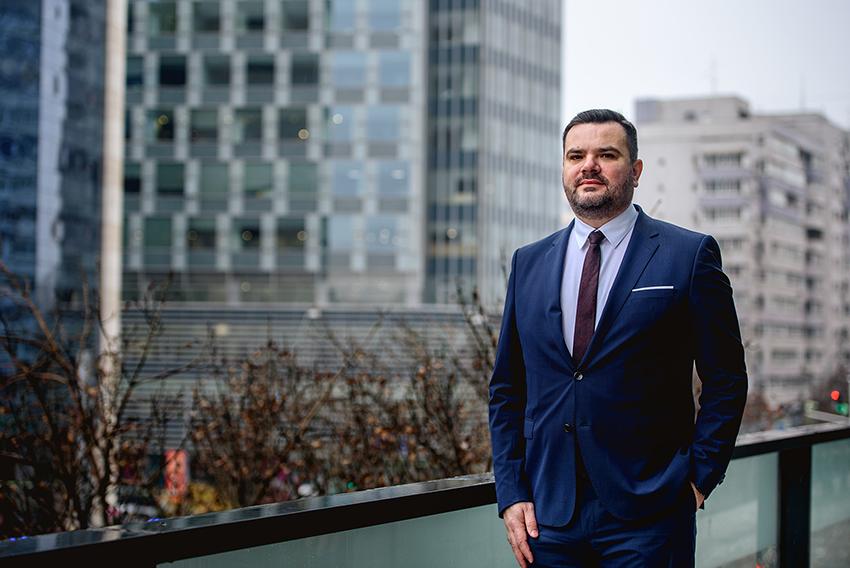Interview: Local Capital and Retail Assets Drive Romania’s Property Market
Amid shifting economic conditions and heightened geopolitical uncertainty across Europe, Romania’s real estate market has continued to demonstrate resilience, particularly in retail and logistics. In this CIJ EUROPE Q&A, Costin Nistor, Managing Director of Fortim Trusted Advisors, shares his insights on how investors are navigating slower GDP growth, persistent inflation, and evolving fiscal policies. He discusses the sectors showing the strongest fundamentals, the balance between international and local capital, and what to expect from the investment pipeline in the second half of 2025.
Q: Romania’s GDP growth has been revised lower, and inflation remains relatively high compared with Western Europe. How are these macroeconomic conditions influencing investor appetite and deal structuring in Romania’s commercial property market?
Costin Nistor: Romania is going through a period of fiscal and legislative changes with little concern from the authorities about stimulating economic growth. These measures overlap with a period of economic difficulties for the whole of Europe, triggered by geopolitical uncertainties, global commercial tensions, and rapidly changing business models. That said, groups operating in Romania are keeping a vigilant eye on opportunities that arise during such times.
The past few months have brought encouraging signs, suggesting that the economy may be on a slow path to recovery. In H1 2025, total real estate investments in Romania reached EUR 431.3 million, signalling strong market performance. The office sector led the charge, attracting EUR 189 million in investment, with the retail sector not far behind at EUR 179 million in transaction volume.
The retail market, particularly retail parks in regional cities, has shown remarkable resilience and growth, continuing to captivate investor attention. This sustained demand is supported by rising consumer spending in these regions and a growing preference for shopping destinations that combine convenience with experience. Retail assets are proving to be a solid investment, offering a reliable income stream and long-term potential.
Looking ahead, several high-profile transactions are in progress in the retail sector, suggesting that this trend will accelerate. By the end of 2025, experts forecast that retail is likely to surpass the office sector and become the dominant asset class in terms of total transaction volume. This shift is being driven by favourable market conditions, regional economic growth, and a marked preference for mixed-use developments.
As retail continues to gain traction, investors are expected to diversify further, capitalising on opportunities across both urban and regional markets. With strong fundamentals supporting the segment, it is well positioned to become the leading force in Romania’s real estate market.
Q: Prime yields in Romania remain significantly higher than in other CEE capitals. How do you see yield levels evolving across office, retail, and industrial in the next 12–18 months, and are they aligned with investor return expectations?
Costin Nistor: On one hand, we see upward pressure on yields, while the shortage of new projects tends to counterbalance this, at least for a while. In the medium term, we estimate that the gap in expectations has a chance of being filled, moving closer to the views of the more liquid buyers.
Q: Beyond the headline deals in retail parks and logistics, we’ve seen office transactions like Victoria Center and Ethos House, as well as industrial assets changing hands. Which of these sub-sectors do you think signals the most sustainable recovery for Romania?
Costin Nistor: Although we had a significant volume of office transactions, each of these deals was based on specific reasons and does not necessarily reflect the broader market trend. By contrast, investors’ appetite for retail projects, especially retail parks, reflects a general trend noticeable not only in Romania but across the CEE and EU regions. While the office sector may still generate transactions, it will remain under pressure for a longer time. Therefore, we believe the retail and industrial sectors have the best chance of remaining investors’ favourites.
Q: International investors represented more than half of H1 2025 volumes, but domestic players such as Paval Holding remain very active. Do you expect the balance between foreign and local capital to shift in the near term?
Costin Nistor: It is difficult to attract new investors to the current Romanian market. Therefore, we believe local capital, which has represented a significant share of investment volume in the past few years, will continue to be the most active in the near term.
Q: Looking ahead to the second half of 2025, what is your expectation for the investment pipeline—are we likely to see more hotels, retail, or office assets come to market, and what will be the key factors determining whether these deals close?
Costin Nistor: As mentioned, retail has strong fundamentals to remain attractive, while the office sector has a sizable pool of investment product, so it is likely to generate some deals. The hotel segment may also see a slight increase, as consolidation in this sector seems to be the next natural step, supported by the recovery of both business and leisure tourism. Industrial remains underpinned by good fundamentals, but in Romania it is dominated by long-term owners and operators, meaning the market offers relatively few investment products.









